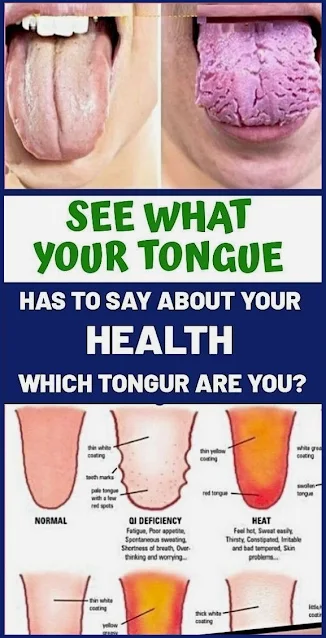What’s on My Tongue?
Bumps, patches, and spots in your mouth can be harmless. But sometimes, they can give clues to what’s going on with your overall health. Infections, stress, medication issues, and even aging can make their marks on your tongue. Find out what your tongue is telling you and when you should see your doctor or dentist.
White Patches
Creamy white spots could be thrush, a fungal infection (shown here). It
often happens after an illness or medications throw off the balance of
bacteria in your mouth. White patches that look lacy could be lichen
planus, which means your immune system is attacking the tissues in your
mouth. If you see hard, flat, white areas that can’t be scraped away, it
could be leukoplakia, which is linked to cancer. Let your dentist know
about any white patches you see.
“Hair” on Your Tongue
If your tongue has a coating that looks like black, brown, or white fur,
you might have hairy tongue. Those “hairs” are proteins that turn
normal, small bumps into longer strands, where food and bacteria get
caught. It should go away when you brush or scrape your tongue. If you
have hairy, white patches that you can’t scrape off, it might be oral
hairy leukoplakia. It can happen to people infected with viruses like
Epstein-Barr or HIV.
Black Tongue
Hairy tongue can be black in color. But your tongue can also go dark
after you take an antacid with an ingredient called bismuth. For some
people, it stains the tongue black when it mixes with saliva. It’s
harmless and goes away once you stop taking the medicine.
Bright Red Tongue
A strawberry-red tongue could be an early sign of Kawasaki disease, a
rare, serious illness that inflames blood vessels all over the body,
most often in children. It’s also a symptom of scarlet fever. If your
red tongue is also smooth and you have pain in your mouth, it might be a
sign that your body doesn’t have enough vitamin B3.
Burning Feeling
If your tongue feels like you scalded it with hot coffee and tastes
metallic or bitter, you may have burning mouth syndrome. It might mean a
problem with the nerves in your tongue. Some health problems, like dry
mouth, infections, acid reflux, and diabetes may cause it, too. For some
people, acidic foods like pineapple as well as toothpaste, mouthwash,
candy, or gum also make their mouth burn.
Smooth Tongue
A tongue without any small bumps on the top may look glossy red. You may
get it if you don’t get enough of some nutrients like iron, folic acid,
or B vitamins. Infections, celiac disease, or some medications can also
cause it. If you have patches of smooth areas next to bumpy ones, it
could be geographic tongue. The spots can come and go, and sometimes
they hurt or burn. It’s harmless, but it could be linked to psoriasis or
lichen planus.
Bumps
Under the tongue is a common spot for canker sores (shown here) — small,
painful, reddish bumps that come and go on their own. A single, painful
bump at the tip could be transient lingual papillitis, “lie bumps,”
which can pop up if your tongue gets irritated. A virus can also cause
lots of little bumps on the tip and sides. If you have a lump on or
under your tongue that hurts and doesn’t go away, let your doctor or
dentist know. They’ll want to check you for oral cancer.
Soreness
Your tongue has lots of nerve endings, so it can really hurt if you bite
or injure it. Canker sores, lichen planus (shown here), thrush, and
geographic tongue can cause pain. Some medications and infections can
make your tongue sore, too. Sometimes pain in your tongue can be a sign
of cancer, especially if you also have a lump or red or white patches.
Bring those problems up with your doctor or dentist.
Macroglossia
It’s when your tongue is too big compared to the rest of your mouth. It
can take up so much room that your doctor might find imprints of your
teeth on its sides. Your doctor will try to figure out and treat the
underlying condition, which may be hypothyroidism, an infection, or
allergies, among others.
Fissured Tongue
Deep grooves can form on your tongue as you age. They also are linked to
Down syndrome, psoriasis, and Sjögren’s syndrome. They’re harmless, but
you should gently brush your tongue to clear food and bacteria. The
grooves might get better when your doctor treats the condition that’s
causing them, if there is one.
Signs of Mouth Cancer
Many spots, bumps, and colors on your tongue are harmless. But it’s good
to know the signs that might point to cancer: Sores that don’t heal,
lumps, tongue pain, and trouble chewing or swallowing. If these symptoms
last more than 2 weeks, see your doctor or dentist.

